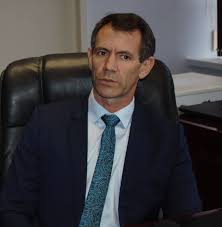By Delisa Thwala
The Eswatini Economy is reportedly performing a bit better, witnessing a 5 percent growth phase.
This was revealed by the Minister of Finance in his video blog where he mentioned that they were as the government ambitious in driving that growth and making more means into the access to finance and financial inclusion.
Rijkenberg said the economy of the country is on an upward trajectory, as it has surpassed previous projections. The minister said his opinion was that the economy could surpass seven or eight per cent in the medium term.
Rijkenberg said the genesis of the economic growth was based mostly on the country’s taking a stance to fight corruption, as per the submissions of the members of the People’s Parliament during Sibaya.
RELATED: New Central Bank Complex to inject E1 billion into economy
In dealing with corruption, the minister said they are exposing everything through forensic investigations and also engaging in internal investigations.
The minister highlighted that the current growth is around five per cent, but if the country would use a conservative three percent as a baseline and then add the possible growth percentages of the projects that they are doing and planning to do,
then one would notice that it is possible for the country to reach a growth rate of 10.2 per cent by the end of term in 2028.
The budget deficit for the financial year 2024/25 is projected at 1.96 percent of GDP, equal to E1.84 billion. He added that government revenue, excluding grants in the 2024/25 fiscal year, is projected to reach E26.99 billion, which is 28.8 percent of GDP, an increase of 1.1 per cent in 2023/24.
It is worth noting that Rijkenberg, in his budget on February 24, 2024, said the government was in the process of constructing the Mpakeni Dam, which will provide water for irrigation and other developments, mainly in the Shiselweni Region.
Worth mentioning is that Eswatini is a small, open economy bordering South Africa and Mozambique.
The country has a population of around 1.2 million, with an estimated per capita (Gross Domestic Product) GDP of $3,823 (E58,449.00) in 2023.
Slightly more than half the economy is concentrated in services, and industry (particularly manufacturing) comprises another third.
South Africa continues to be Eswatini’s main trading partner, accounting for about 65% of its exports and 75% of its imports.
Meanwhile Minister Neal said, overall, the economy performed well during the first half of 2024, supported by both domestic and foreign demand.
He said the sustained increase in SACU revenues boosted domestic demand and lifted growth in the service sector.
“The growth was broad based with merchandise exports increasing by 14% over the past 12 months. Real GDP growth is projected to remain strong at 4.6% in 2024 (from 4.8% in 2023),” he said.
Rijkenberg said Eswatini’s economic prospects remain favourable. Rising external demand is expected to drive manufacturing and other exports.

He further said, the high SACU revenues in 2024 were projected to ease fiscal and external pressures, but the situation is complicated by financing challenges and associated expenditure arrears.
“The fiscal deficit is projected to remain at 2.0% of GDP in 2024, on account of higher SACU revenues. Public debt is projected to remain below 40% of GDP. In the medium-term fiscal deficit may increase due to declining SACU revenue,” he said.
In addition, he said, the current account surplus is projected to increase in 2024. Nevertheless, gross official reserves are projected to remain below 3 months of import cover, as the government uses SACU reserves to finance the fiscal deficit.
The Minister further said, Eswatini faces multiple development challenges to ensure inclusive, sustainable, and resilient economic growth.
Central among these is a fiscally unsustainable public sector-driven growth model, which has trapped the country in a low growth and high poverty and inequality equilibrium and crowded out investments in productive sectors and private sector development.
Fluctuations in SACU have complicated fiscal management, and constrained long-term planning for growth-enhancing investments.
“Access to credit for Small and Medium Enterprises (SMEs) is constrained by limited digitization of enterprise cash flows, weak secured transaction and insolvency regimes, high collateral requirements, and limited quality of credit information,” he said.
RELATED: Eswatini Economy is stable to start a business- Minister of Finance
In conclusion he said Energy security is a major concern as Eswatini imports up to 90% of its needed electricity from South Africa.
To address dependency on power import, the Government of the Kingdom of Eswatini has recently updated its Generation Master Plan,
which includes development of a significant coal plant (200-300MW) in the country along with renewable energy development to increase domestic installed capacity to 1GW by 2050.

